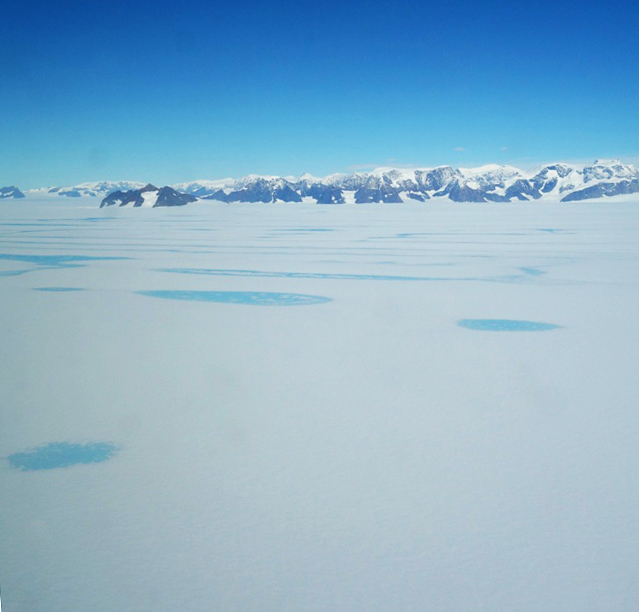“Hairdryer winds” cause ice melt during Antarctic winter
A new study involving scientists from British Antarctic Survey (BAS) suggests for the first time that warm winds are creating large surface melting of ice shelves in Antarctica during the freezing winter.
Understanding how these warm winds may affect ice shelves in Antarctica is important, because winter melting may affect ice shelf stability in the future. The study is published this week in Geophysical Research Letters.
Winter over the Larsen C Ice Shelf in the Antarctic Peninsula is pitch black and freezing cold for months on end with temperatures as low as minus 25°C. Despite this, melting continues during the winter because of warm foehn (German for ‘hairdryer’) winds that blow down from the Peninsula mountains, the new research suggests.
Observations from an automatic weather station on the Larsen C ice shelf, on the Antarctic Peninsula, show that around once a week an extremely warm, dry wind blows down from the mountains. This wind can raise the temperature by 15 to 20 degrees Celsius in just a few hours.
When temperatures rise above zero, snow begins to melt, causing meltwater lakes to accumulate. These lakes can be fifty metres wide, up to a kilometre in length and one to two metres deep.

Lead author Peter Kuipers Munneke, from Utrecht University’s climate institute IMAU, says:
“All of the winter heat comes from the foehn wind, there is no other heat source this period of year. We had known about these meltwater lakes during the summertime, but apparently 20 to 25 percent of the meltwater from the past few years actually occurs throughout the winter instead.”
Satellite imagery provided by the European Space Agency (ESA) allowed scientists to study the evolution of meltwater lakes in the region for over a decade. The images reveal that during the course of the winter the meltwater lakes re-freeze, which means they don’t currently contribute to global sea-level rise.
Co-author Ella Gilbert, Atmospheric Scientist at British Antarctic Survey says:
“This is a really exciting paper that brings together many different types of information from satellites, weather stations and weather models. We’ve shown for the first time that Larsen C is melting not only in summer, as one might expect, but also in the dark, cold Antarctic winter when there is no sunlight. This is hugely important because it affects the stability of the ice shelf. If Larsen C is melting more than we previously thought, it might be more likely to collapse, like other ice shelves on the Antarctic Peninsula have done in the past.”
Read the paper here.
Read the press release issued by University of Utrecht here.